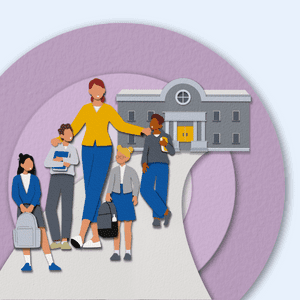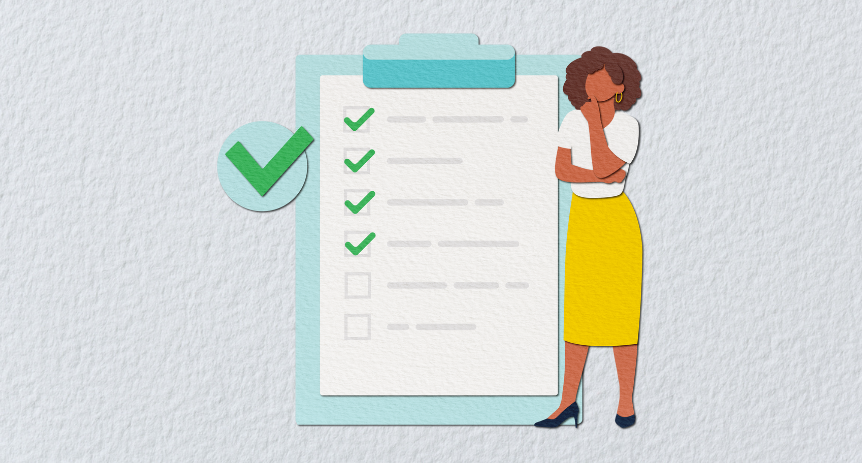Substitute teachers, particularly those new to the role, often have several concerns they might be hesitant to voice. Stepping into an unfamiliar classroom with new students can be daunting, and the uncertainties that come with the territory can make the job feel overwhelming.
These questions usually revolve around critical areas such as effective classroom management, understanding and meeting the expectations set by the regular teacher and the school administration, and navigating the logistical aspects of the school day.
From wondering how to quickly establish authority and rapport with students to seeking clarity on lesson plans and daily schedules, these common concerns are shared by many substitute teachers. Here are some of the most frequent questions and challenges they face:
Classroom management
1. How do I handle disruptive behavior?
Dealing with disruptive behavior is all about setting clear expectations from the get-go. Start by outlining the rules and consequences at the beginning of the day. Use positive reinforcement, like praise or small rewards, to encourage good behavior. If disruptions occur, stay calm and consistent. Techniques like standing near the disruptive student, redirecting their attention, or giving a quiet, non-verbal cue can be very effective. If the behavior continues, follow the school’s disciplinary procedures, which might involve sending the student to the office or contacting an administrator.
2. What if a student refuses to follow my instructions?
Stay calm and composed. Give the student a clear, firm directive in a neutral tone. Sometimes restating the instruction or explaining the reason behind it can help. If the student continues to refuse, try speaking privately and empathetically with the student to understand what the issue is. If they still don’t comply, follow the school’s protocol, which might include involving a senior teacher or administrator. Be sure to document the incident for future reference.
3. How should I address bullying or serious incidents?
Immediate and decisive action is important to maintaining control and safety. Try separating the students involved and addressing the behavior calmly but firmly. Make it clear that bullying is unacceptable. Support the victim to ensure they feel safe. If the behavior becomes severe, you may need to involve an administrator. Document the incident in detail and report it to the appropriate school personnel. If possible, follow up to ensure the incident is being handled and preventive measures against future incidents are in place.
Expectations and procedures
4. What are the exact expectations for my role today?
Upon arrival, check in with the main office to get the necessary information, including lesson plans and schedules. It’s a good idea to arrive a few minutes early to review these documents thoroughly before students arrive. Introduce yourself to neighboring teachers and touch base with them for additional insights. Clarify any uncertainties about your responsibilities to ensure a smooth day.
5. What should I do if I finish the lesson plan early?
Having a few backup activities ready can save the day! Think brain teasers, educational games, or discussion topics. Reading aloud, classroom discussions, or short quizzes can also be effective. Engage students with creative activities like drawing or writing exercises. Always make sure these activities align with the school’s policies and learning objectives.
6. How do I handle students with special needs?
Familiarize yourself with any documentation regarding students with special needs, noting specific accommodations or modifications. Be flexible and patient, adapting your methods to meet diverse needs. Use clear instructions and offer additional support as needed. Foster an inclusive environment and seek assistance from special education teachers if challenges arise. Document any significant interactions for the regular teacher.
Logistics and practicalities
7. Where are the necessary supplies and resources?
Upon arrival, check the classroom for notes or instructions from the regular teacher about where supplies are located. Basic supplies are usually found in designated areas, like supply cabinets or teacher desks. If you can’t find something, ask neighboring teachers or the main office staff for help.
8. What are the emergency procedures?
Locate the emergency plan, usually posted near the door. Familiarize yourself with evacuation routes, lockdown procedures, and emergency contacts. Understand the protocols for different emergencies. Communicate these procedures to students at the beginning of the day to ensure everyone knows what to do in case of an emergency. If you find yourself in a classroom without these materials, reach out to the front office to get a copy.
9. How do I take attendance and submit it properly?
Find the attendance sheet or electronic system and follow the instructions provided by the regular teacher. Mark attendance accurately, including any notes about absences or late arrivals. Submit it according to the school’s procedures, ensuring all information is correct.
Interactions and communication
10. Who should I contact if I have questions or problems during the day?
Identify key individuals who can help you, like the main office staff or neighboring teachers. If the regular teacher has left contact information for a mentor teacher or department head, use that resource. For urgent matters, reach out to the principal or vice principal.
11. How should I communicate with parents if needed?
Leave direct communication with parents to the regular teacher or administration unless there are immediate concerns. If you need to contact a parent, follow the school’s protocol. Keep communication clear, concise, and focused on the facts. Document the conversation for the regular teacher’s reference.
Professional concerns
12. What should I wear to fit in with the school’s culture?
Dress professionally and appropriately for the educational environment. Business casual is usually a safe bet. Avoid overly casual clothing unless it’s known to be acceptable at the school. Consider the day’s activities, and dress for comfort and practicality.
13. How can I build rapport with students in a short time?
Be friendly and approachable. Greet each student warmly and introduce yourself with a smile. Learn their names quickly, and show genuine interest in their activities. Set clear expectations, use humor appropriately, and engage with interactive activities. Be supportive and encouraging to build trust and rapport.
14. Will my performance today affect my future opportunities for assignments?
It can! Demonstrating professionalism, reliability, and effective classroom management can lead to positive feedback and more assignments. Treat each assignment as an opportunity to showcase your abilities and build a positive rapport with the school community.
15. Am I expected to grade student work or leave it for the regular teacher?
Unless specified otherwise, focus on completing the lesson plans and managing the classroom rather than grading. If instructed to grade certain assignments, follow the guidelines carefully. Leave detailed notes for the regular teacher about what was covered and any work collected. If unsure, err on the side of caution and leave the grading for the regular teacher.
Being a successful substitute teacher involves preparation, adaptability, and a positive attitude. By approaching each day with professionalism and enthusiasm, you contribute significantly to the educational community and leave a lasting positive impression.






